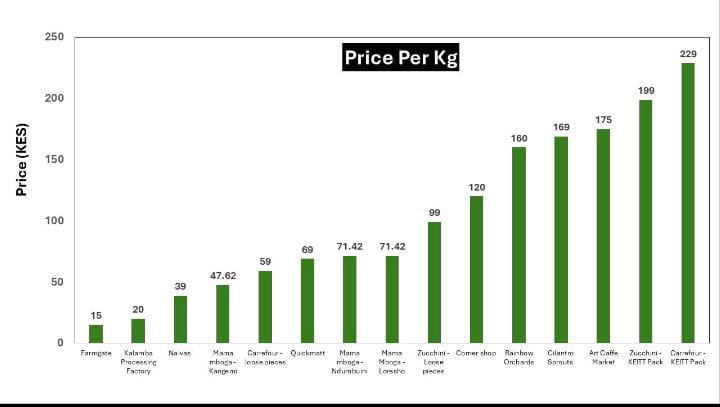November to February/March marks the peak mango season in Kenya, with Makueni County leading as the top mango producer, contributing approximately 20% of the nation’s total mango production. Last week, I had the opportunity to visit the county and purchase farm-fresh mangoes directly from a farmer at farm-gate prices. The price was KES 7 (about 0.05 USD) per piece for ‘apple’ mangoes weighing between 400-500 grams. According to the farmer, this price is higher because it is set for exporters who are allowed to selectively harvest from trees or choose from already harvested batches. In contrast, some farmers sell their mangoes to brokers for as low as KES 4 (about 0.03 USD) per fruit.
Eager to understand the price dynamics further, I conducted a quick market survey in Nairobi. The results were striking: mango prices varied widely, with roadside grocers selling them for KES 20 per piece, while high-end retail outlets were charging as much as KES 100 for the same mango.
This wide price gap between farm-gate and retail prices raises important questions about the fairness and sustainability of current pricing for mangoes in Kenya. Many argue that the farm-gate prices of KES 5 to 10 per fruit are fair, considering the costs of production. However, I believe there is room for improvement. With better efficiency in the mango supply chain and a reduction in postharvest losses, farmers could earn more from their crops without overburdening consumers with excessive retail prices.
The goal should be to find a price that ensures farmers can make a decent profit while keeping mangoes affordable for consumers. If the value chain becomes more efficient, everyone — from farmers to traders to consumers — could benefit, ensuring the sustainability of the mango farming industry and better financial security for those involved.

Source: Professor Jane Ambuko
Email : jane.ambuko@uonbi.ac.ke

